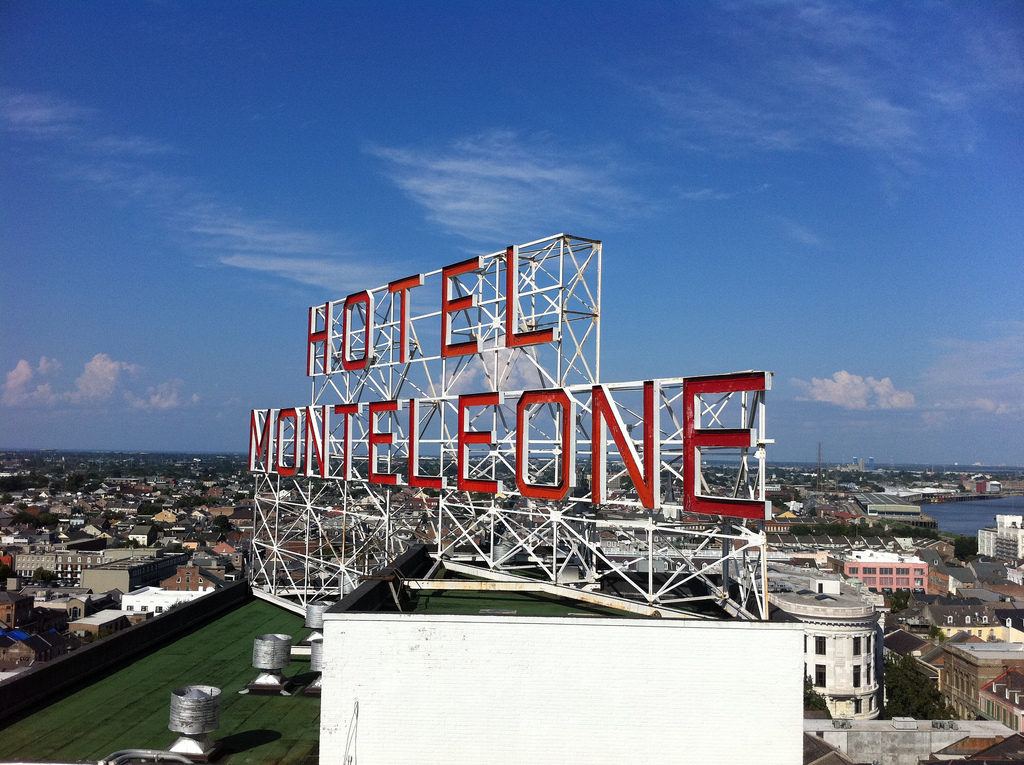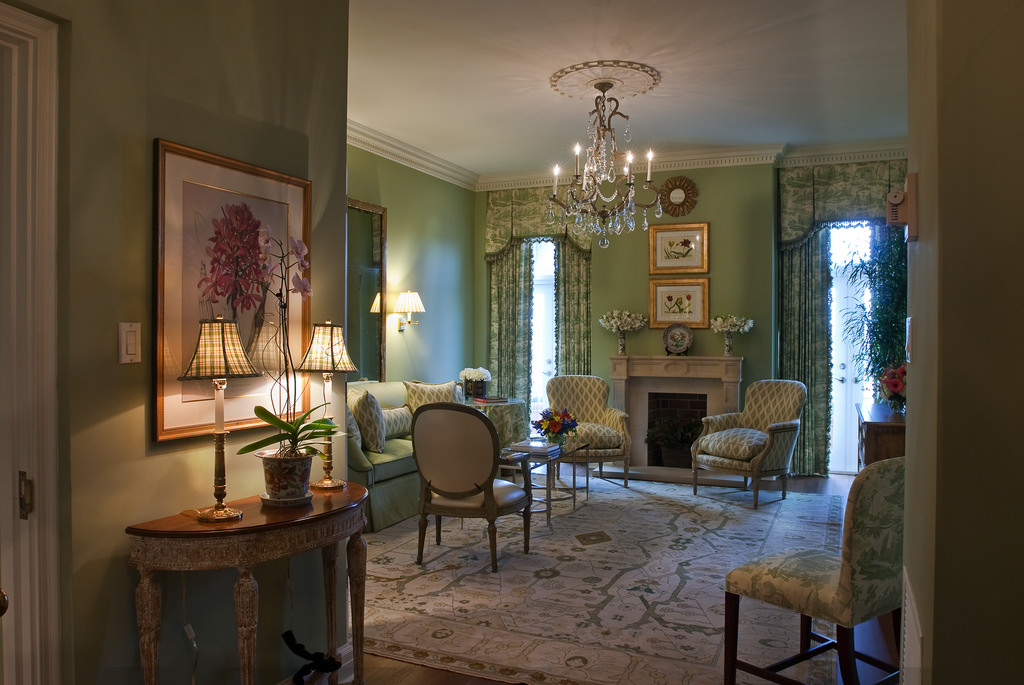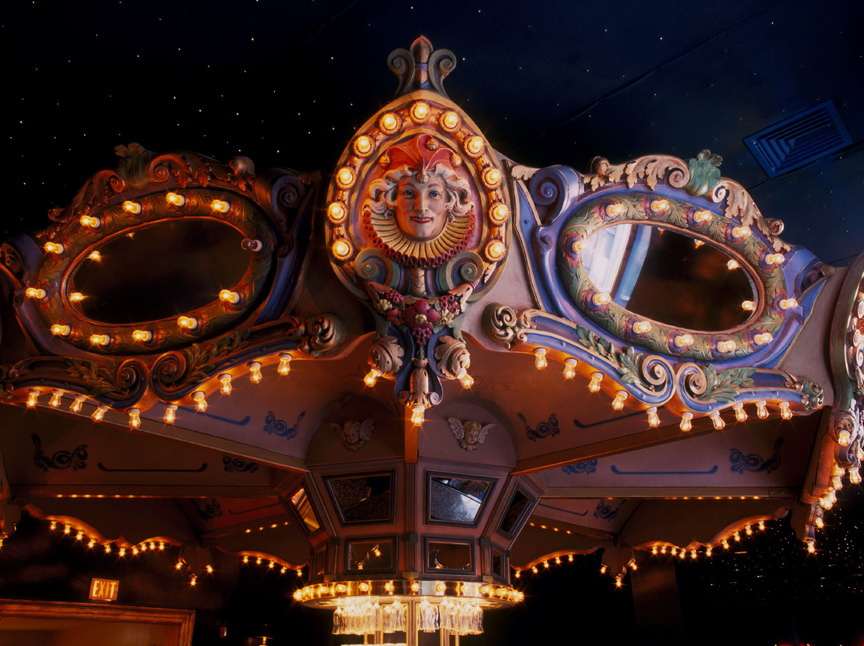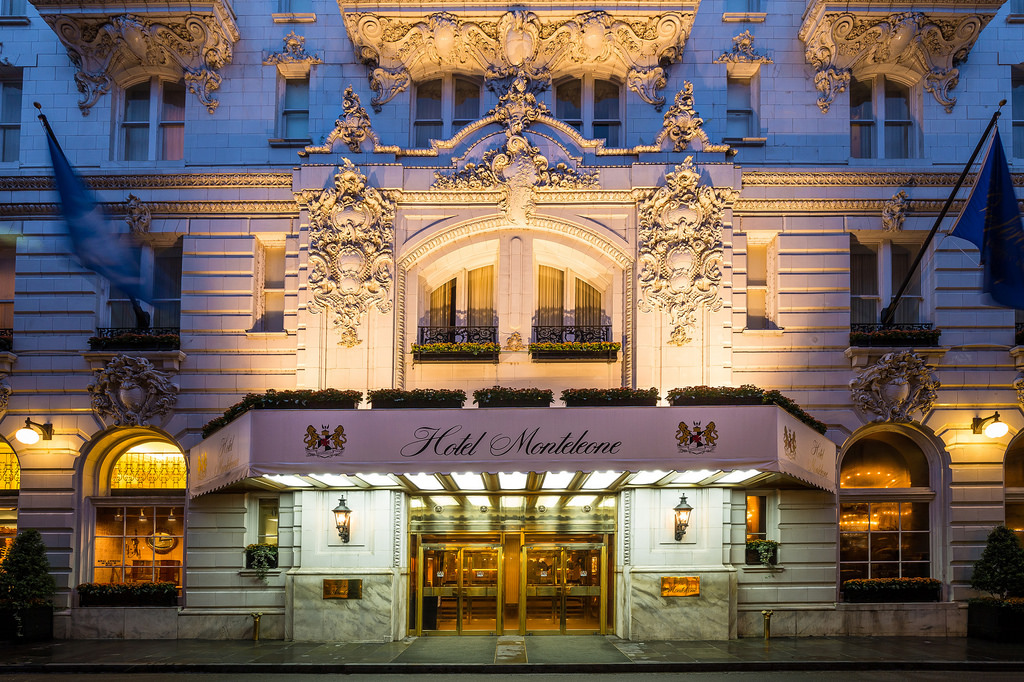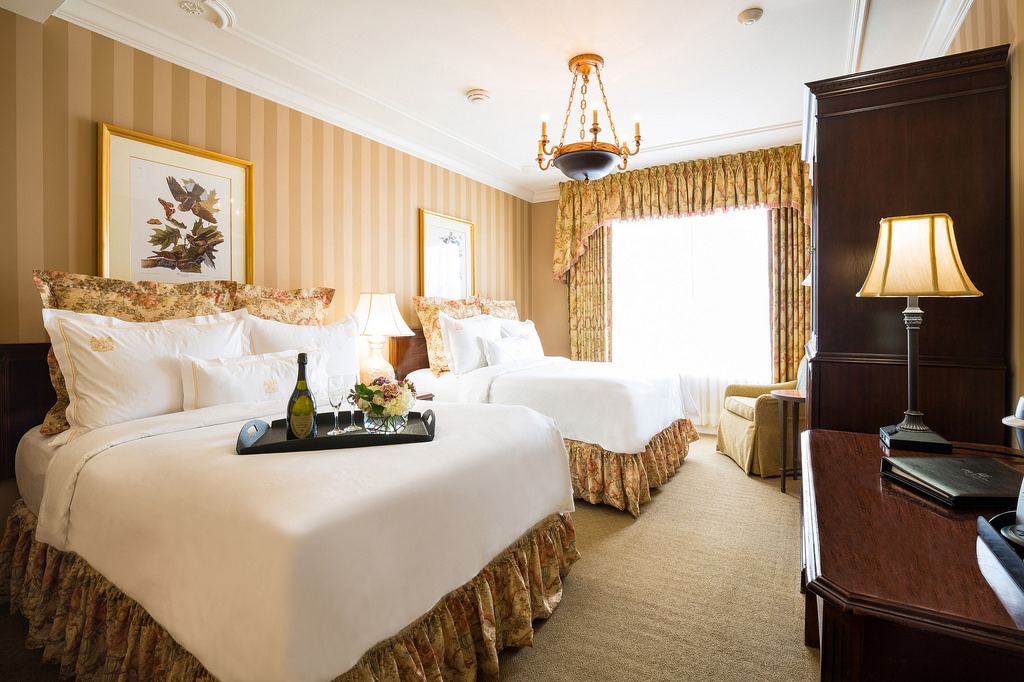Strolling down Rue Royale, you can see the proud white tower of the Hotel Monteleone, and its flickering scarlet rooftop sign, from several streets away. Anyone can help you find it; chances are it’s been here longer than them.
Situated on an impressive half-block of real estate in the heart of the hallowed French Quarter of New Orleans, the Monteleone makes easy work of Big Easy elegance and the old-world splendour of yesteryear. Although the original foundation was demolished long ago to make way for the current structure, the hotel’s elaborate Beaux-Arts façade still inspires admiration for its more than 125-year-old name. After all, in spite of the Depression, hurricanes, and the variable tempers of Ernest Hemingway, the Hotel Monteleone—not to mention the ghosts widely rumoured to roam its halls—has thrived.
With 600 rooms, the property is an imposing presence with a petite feel. Since its purchase by the industrious Antonio Monteleone in 1886, five generations bearing his name have owned and operated the luxury landmark long-loved as a watering hole for socialites and storytellers. It remains one of the last family-owned and -operated hotels in the United States, and was one of few hotels to remain open following the stock market crash of 1929, weathering the storm of financial instability despite a poorly-timed 1928 renovation. Today, Hotel Monteleone is home to a heated rooftop pool and full-service spa, as well as the famous Carousel Bar and Lounge, which features a luminous, revolving cocktail bar dating back to the 1940s.
It’s also replete with literary lore; once frequented by Hemingway, Tennessee Williams, and Faulkner, the Monteleone is also the tongue-and-cheek birthplace of Truman Capote. As a time-honored hallmark of New Orleans kaleidoscopic decadence, it has appeared in a number of classic novels, and was designated an official literary landmark by the prestigious Friends of the Library Association in 1999—one of only three hotels in the U.S. to receive the honour. The Monteleone’s Literary Suites are, unsurprisingly, among its most popular.
Today, visitors of the hotel enjoy a confluence of old and new in its coffered ceilings, 24/7 fitness centre, jazz salon, and free WiFi. Stepping off the boisterous streets of the legendary city beyond, guests are greeted with the unshakeable feeling of stepping back in time. The smartly-clad staff and soft, dramatic furnishings offer a quiet and sophisticated haven from the city’s glittering frivolity (fact: in 1964, the Monteleone refused to lodge The Beatles for fear of the havoc they might cause).
This is not, of course, to say the hotel hasn’t been the setting for a few revels of its own. In 1955, the Carousel Bar’s Swan Room nightclub opened, setting the stage for musicians including Liberace. In 1971, it charged spectators a dollar to watch boxer Joe Frazier train in the hotel for his fight against Muhammad Ali, and come Mardi Gras each year, Hotel Monteleone’s musical lineups often play to a full house.
After a day of Bourbon Street and beignets, take a spin on the Monteleone’s merry-go-round bar with a Sazerac (declared the official drink of New Orleans by the Louisiana Legislature), or tuck into a plate of charbroiled oysters at Criollo, chef Joseph Maynard’s Creole-comprised restaurant. Afterward, take in a crooning soloist in the hotel’s cocktail lounge before hitting the lively brass scene on Frenchmen Street, returning only when Nola restaurant sees fit to send you, brimming with bourbon, song, and late-night po’ boys, back toward that flickering scarlet sign.

